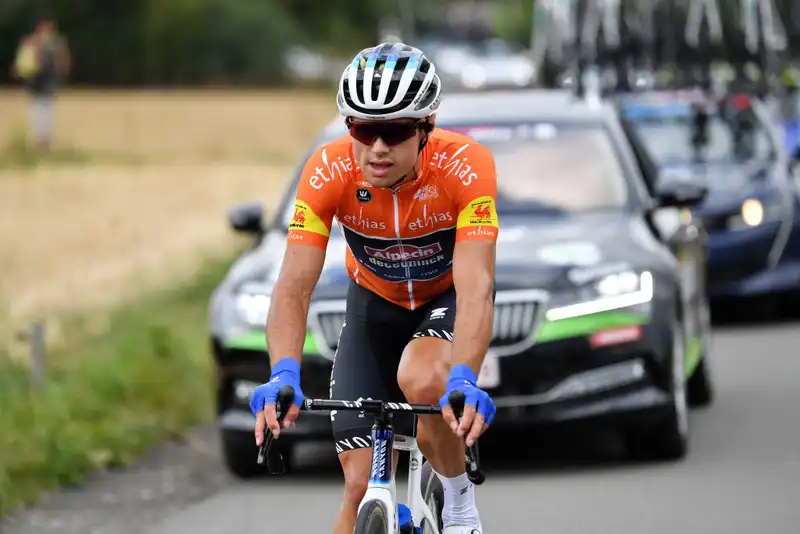The UCI has been forced to correct a press release issued by Bahrain Victorious announcing the signing of Australian rider Robert Stannard, who was suspended after a four-year time limit for violating anti-doping rules.
The team stated that the medical team “could not conclude any wrongdoing” and claimed that the case, which concluded in June, “does not specify whether the rider is accused of using a banned substance or method.”
Stannard continued to argue that he had never knowingly ingested a prohibited substance or used a prohibited method in a trial based on the Athlete Biological Passport (ABP) anomaly.
He viewed his case as a choice, stating that he “had to make a difficult choice: accept the ruling and be able to play the sport I love again, or fight to clear my name.”
The UCI determined that Stannard's ABP values indicated the use of red blood cell stimulants (such as EPO) or blood transfusions.
An independent panel of experts (Dr. Laura Lewis, Dr. Paulo Paixao, and Dr. Jacob Molkeberg) analyzed three samples that deviated from the norm, rejected alternative explanations by Rider's experts, and agreed that doping was a reasonable explanation for the anomaly.
“In our view, the rider's data showed several patterns indicative of blood manipulation, with clear off-phases before and after competitions in August 2018 and January 2019,” the panel noted in its decision document.
The first sample (sample 2) was taken on the first day of the 2018 Tour de l'Avenir and had a hemoglobin (Hb) level of 16.8 and a high OFF score (a measure of stimulated red blood cell production calculated using the Hb level and percentage of immature red blood cells in the sample).
A second sample (sample 6) taken on January 13, 2019, one week after Stannard was eliminated from the Australian Road Championship, showed a high OFF score and low reticulocyte percentage.
“High OFF scores are usually observed when the body's erythrocyte volume is physiologically excessive (high hemoglobin) and the body's own erythropoiesis is consequently reduced (low reticulocyte) to suppress the excess of red blood cells,” the panel explained, noting that this condition is “a result of the erythropoiesis stimulating factor (ESA) use and recent discontinuation or application of blood transfusions,” it added.
“In summary, on several occasions athletes have experienced suppressed erythropoiesis (production of red blood cells) during or after competition, which indicates higher than physiological Hb levels.
“Therefore, we conclude that it is likely that a prohibited substance or prohibited method was used and that this passport is unlikely to be due to other causes. In summary, this profile has several characteristics that indicate that blood was manipulated during the preparation for the competition,” the committee concluded.
Stannard's expert argued that factors such as the high-altitude training camp before Sample 2 was taken and the extreme training conditions before Sample 6 was taken were not statistically outliers.
The panel rejected Stannard's expert, Dr. Paul Scott's explanation of the numbers based on the training schedule for the 2018 Tour de Lavenir.
Normally, suspensions would be issued from the date of the UCI tribunal's decision. However, the judges agreed that the UCI should have acted promptly after the first sample would have been automatically flagged by the system in 2018.
Because the UCI delayed the alleged anti-doping rule violation against Stannard until several years later, the judge allowed the suspension period to be changed to the date of the first suspect sample under UCI rules.
Stannard's suspension was from August 17, 2018 to August 16, 2022, which was past the date, so the period of ineligibility had ended.
However, the 25-year-old remained liable to pay a fine, which was withheld from the decision document, along with C$2,500 for results management and €3,129 for blood sample documentation.
.

Comments